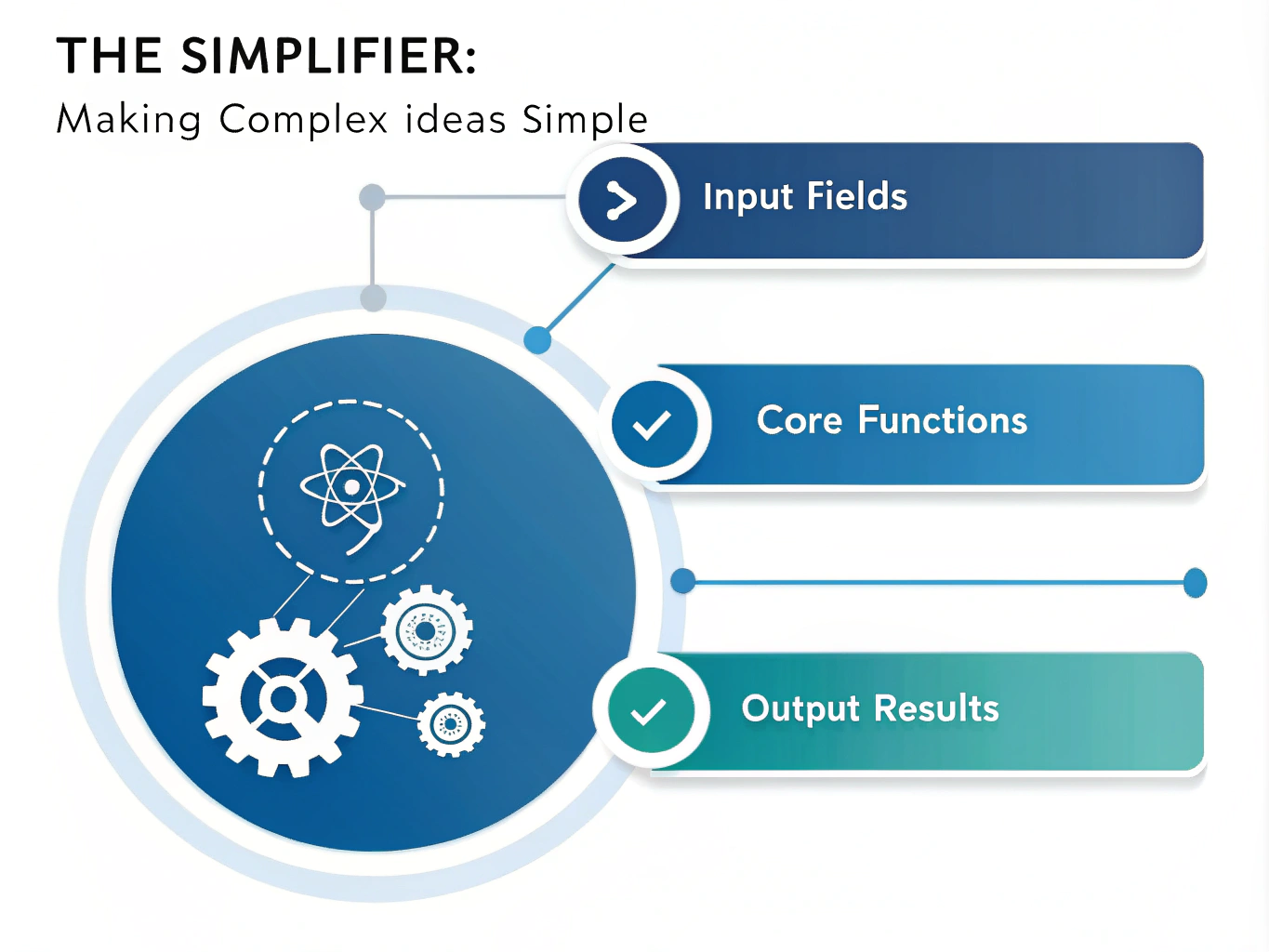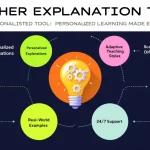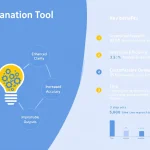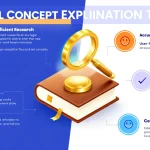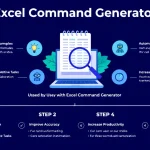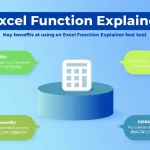The Simplifier
Is this tool helpful?
How to Use The Simplifier Tool Effectively
The Simplifier helps you turn complicated topics into easy-to-understand explanations tailored to any audience. Follow these steps to use the tool efficiently:
1. Complex Concept Field
Type in the complex topic you want explained simply. Here are examples you can try:
- “Blockchain technology and how cryptocurrencies work”
- “The principles behind photosynthesis in plants”
2. Target Audience Field
Specify the age group or education level for your explanation to match their understanding. Consider these inputs:
- “14-year-old high school student”
- “Beginner-level adult learner”
3. Visual Aids Option
This optional feature lets you choose if you want diagrams or illustrations alongside your explanation. Visual aids help boost comprehension, especially for learners who benefit from images or step-by-step visuals.
What Is The Simplifier and Why Use It?
The Simplifier transforms hard-to-understand subjects into clear, straightforward explanations that fit your audience’s age and knowledge level. It uses proven readability techniques and simplification methods to ensure messages connect no matter who you’re talking to.
Core Purpose
It helps you communicate complex ideas without confusing or overwhelming your audience. By adjusting language complexity and vocabulary, you keep your message accessible and engaging.
Key Benefits
- Boosts understanding: Makes difficult topics easier to grasp.
- Improves retention: Helps learners remember information better.
- Expands communication: Bridges gaps between experts and novices.
Practical Uses for The Simplifier Tool
Here’s how The Simplifier applies in real life to improve communication and learning:
1. Educational Settings
- Teachers preparing clear lesson explanations.
- Students simplifying study topics for review.
- Tutors helping learners understand tough concepts.
2. Professional Use
- Explaining technical details to clients clearly.
- Creating effective presentations with easy-to-follow language.
- Preparing training materials accessible to all employees.
3. Science and Public Communication
- Summarizing research papers for broader audiences.
- Writing science journalism that anyone can understand.
- Sharing health and safety information with clear language.
Example of Simplifying a Complex Scientific Concept
Let’s simplify the concept of nuclear fusion for a young learner:
Original: “Nuclear fusion occurs when atomic nuclei combine to create heavier nuclei, releasing energy based on Einstein’s equation, E=mc².”
Simplified for a 12-year-old: Think of nuclear fusion like joining two small LEGO pieces to make a bigger one. When they stick together, a lot of energy comes out as light and heat. This is how the sun makes the sunlight and warmth we feel.
Readability Formulas Behind The Simplifier
The Simplifier uses these trusted math formulas to measure and adjust text difficulty, ensuring your explanations fit your audience:
Flesch Reading Ease
This formula checks how easy a text is to understand:
$$ \text{Flesch Reading Ease} = 206.835 – (1.015 \times \text{ASL}) – (84.6 \times \text{ASW}) $$Flesch-Kincaid Grade Level
This estimates the U.S. school grade needed to understand the text:
$$ \text{Flesch-Kincaid Grade Level} = (0.39 \times \text{ASL}) + (11.8 \times \text{ASW}) – 15.59 $$SMOG Index
Measures the reading level based on complex words, useful for technical content:
$$ \text{SMOG Grade} = 1.0430 \times \sqrt{\text{Polysyllabic Words} \times \frac{30}{\text{Number of Sentences}}} + 3.1291 $$Gunning Fog Index
This formula helps maintain clarity without oversimplifying:
$$ \text{Fog Index} = 0.4 \times \left[\left(\frac{\text{Words}}{\text{Sentences}}\right) + 100 \times \left(\frac{\text{Complex Words}}{\text{Words}}\right)\right] $$Frequently Asked Questions About The Simplifier Tool
What types of concepts can I simplify?
The Simplifier works well with scientific theories, complex processes, mathematical ideas, historical events, and abstract topics. It’s great for academic, professional, and everyday content that needs clarity.
How do I choose the right target audience level?
Think about what your audience knows and how they learn best. Use simple words and examples for younger kids, and include more detailed terms for older or more advanced learners.
Can I use these explanations for teaching materials?
Yes. The Simplifier provides explanations suited for lesson plans, study guides, and educational content tailored to reading and comprehension levels.
Are visual aids necessary?
Visual aids aren’t required but can make a big difference—especially for learners who understand better with images or how-to visuals.
How can I make the most of the simplified explanations?
Use the explanations as a starting point. Add examples, stories, or interactions that connect with your audience’s experience for better engagement.
Does the tool support multiple languages?
Currently, The Simplifier primarily handles English, but it can be adapted for other languages when you select appropriate language settings.
Review and tweak the simplified content to fit your unique context. The Simplifier gives you a strong foundation for clear, effective communication tailored to your audience.
Important Disclaimer
The calculations, results, and content provided by our tools are not guaranteed to be accurate, complete, or reliable. Users are responsible for verifying and interpreting the results. Our content and tools may contain errors, biases, or inconsistencies. Do not enter personal data, sensitive information, or personally identifiable information in our web forms or tools. Such data entry violates our terms of service and may result in unauthorized disclosure to third parties. We reserve the right to save inputs and outputs from our tools for the purposes of error debugging, bias identification, and performance improvement. External companies providing AI models used in our tools may also save and process data in accordance with their own policies. By using our tools, you consent to this data collection and processing. We reserve the right to limit the usage of our tools based on current usability factors.
